
Wine is an alcoholic beverage, typically made of fermented grape juice. The natural chemical balance of grapes is such that theycan ferment without the addition of sugars, acids, enzymes or other nutrients.
Wine is produced by fermenting crushed grapes using various types of yeast. Yeast consumes the sugars found in the grapes and converts them into alcohol. Different varieties of grapes and strains of yeasts are used depending on the type of wine being produced.
Although other fruits such as apples and berries can also be fermented, the resultant wines are normally named after the fruit from which they are produced (for example, apple wine or elderberry wine) and are generically known as fruit wine or country wine (not to be confused with the French term vin de pays). Others, such as barley wine and rice wine (i.e., sake), are made from starch-based materials and resemble beer and spirit more than wine, while ginger wine is fortified with brandy. In these cases, the use of the term "wine" is a reference to the higher alcohol content, rather than production process. The commercial use of the English word "wine" (and its equivalent in other languages) is protected by law in many jurisdictions.
Wine has a rich history dating back to around 6000 BC and is thought to have originated in areas now within the borders of Georgia and Iran. Wine first appeared in Europe at about 4500 BC in the Balkans, and was very common in ancient Greece, Thrace and Rome. Wine has also played an important role in religion throughout history. The Greek god Dionysus and the Roman equivalent Bacchus represented wine, and the drink is also used in Catholic Eucharist ceremonies and the Jewish Kiddush.
Tasting
Wine tasting is the sensory examination and evaluation of wine. Wines are made up of chemical compounds which are similar or identical to those in fruits, vegetables, and spices. The sweetness of wine is determined by the amount of residual sugar in the wine after fermentation, relative to the acidity present in the wine. Dry wine, for example, has only a small amount of residual sugar.
Individual flavors may also be detected, due to the complex mix of organic molecules such as esters and terpenes that grape juice and wine can contain. Experienced tasters can distinguish between flavors characteristic of a specific grape and flavors that result from other factors in wine making. Typical intentional flavor elements in wine are those imparted by aging in oak casks; chocolate, vanilla, or coffee almost always come from the oak and not the grape itself.
Banana flavors (isoamyl acetate) are the product of yeast metabolism, as are spoilage aromas such as sweaty, barnyard, band-aid (4-ethylphenol and 4-ethylguaiacol), and rotten egg (hydrogen sulfide). Some varietals can also have a mineral flavor due to the presence of water-soluble salts (like limestone).
Wine aroma comes from volatile compounds in the wine that are released into the air. Vaporization of these compounds can be sped up by twirling the wine glass or serving the wine at room temperature. For red wines that are already highly aromatic, like Chinon and Beaujolais, many people prefer them chilled.
Grape varieties
Wine is usually made from one or more varieties of the European species Vitis vinifera, such as Pinot Noir, Chardonnay, Cabernet Sauvignon, Gamay and Merlot. When one of these varieties is used as the predominant grape (usually defined by law as a minimum of 75% 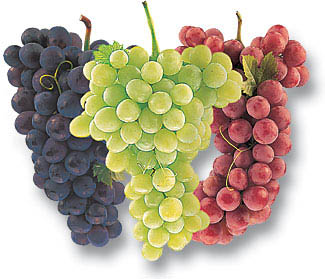
or 85%), the result is a varietal, as opposed to a blended, wine. Blended wines are not necessarily considered inferior to varietal wines; some of the world's most expensive wines, from regions like Bordeaux and the Rhone Valley, are blended from different grape varieties of the same vintage.
Wine can also be made from other species of grape or from hybrids, created by the genetic crossing of two species. Vitis labrusca (of which the Concord grape is a cultivar), Vitis aestivalis, Vitis rupestris, Vitis rotundifolia and Vitis riparia are native North American grapes usually grown for consumption as fruit or for the production of grape juice, jam, or jelly, but sometimes made into wine.
Hybridization is not to be confused with the practice of grafting. Most of the world's vineyards are planted with European V. vinifera vines that have been grafted onto North American species rootstock. This is common practice because North American grape species are resistant to phylloxera, a root louse that eventually kills the vine. In the late 19th century, most of Europe's vineyards (only excluding some of the driest vineyards in Southern Europe) were devastated by the bug, leading to massive vine deaths and eventual replanting. Grafting is done in every wine-producing country of the world except for Argentina, the Canary Islands and Chile, which are the only ones that have not yet been exposed to the insect.
In the context of wine production, terroir is a concept that encompasses the varieties of grapes used, elevation and shape of the vineyard, type and chemistry of soil, climate and seasonal conditions, and the local yeast cultures. The range of possibilities here can result in great differences between wines, influencing the fermentation, finishing, and aging processes as well. Many wineries use growing and production methods that preserve or accentuate the aroma and taste influences of their unique terroir. However, flavor differences are not desirable for producers of mass-market table wine or other cheaper wines, where consistency is more important. Such producers will try to minimize differences in sources of grapes by using production techniques such as micro-oxygenation, tannin filtration, cross-flow filtration, thin film evaporation, and spinning cones.
Benefits of Red wine
Red wine maintains the immune system: According to a study published by the University of Florida, red wine does not suppress the immune system like other alcoholic beverages. A two month study on mice has been performed to examine what immune system reactions red wine caused on mammals. The team examined mice of various drinking levels - non-drinkers, red wine drinkers, and heavy alcohol drinkers. They found that those who drank the red wine had a normal level of immunity, the same as that of the non-drinking mice. (The level of red wine consumption for the mice would equal that of a human drinking two or three glasses a night. But at the moment of writing (2001) they don't have a clue which compounds in red wine is causing this, but I'd go for the tannins.
Polyphenols in wine: like the tannin mentioned above, do have a positive effect on your body as well: they are excellent antioxidants. In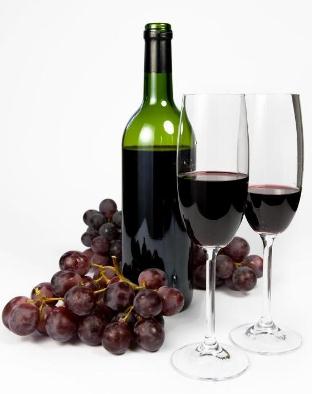
Resveratrol (trans-3,5,4'-trihydroxystilbene): is a naturally occurring antioxidant too that decreases the stickiness of blood platelets and helps blood vessels remain open and flexible. It is said that it inhibits the enzymes that can stimulate cancer-cell growth and suppress immune response. A series of laboratory experiments suggests the proof of this statement. However, this was only tested on animals. In another set of animal tests, resveratrol was shown to inhibit both the acute and chronic phases of inflammation (yet again the immune system). Wine is the primary dietary source of resveratrol, and red wine contains much greater amounts of resveratrol than does white wine, since resveratrol is concentrated in the grape skin and the manufacturing process of red wine includes prolonged contact with grape skins. Resveratrol has been used in connection with atherosclerosis too (a reduced risk of course).
Resveratrol is a phytoestrogen (= similar to estrogen, but from plant origin, and is known to inhibit tumors in the breast and uterus), but it differs from other phytoestrogens in that it acts as an estrogen agonist and stimulates ERE-driven reporter gene activity in CHO-K1 cells (I couldn't get access to ERE gene information, nor the exact description of CHO-K1 cells, but the context of the abstract implies increased DNA transcription activity of specific ERE-gene sequences in genetically modified(?) cells in rat uteri).
A brief calculation: a glass of red wine provides approximately 640 mcg of resveratrol, while a handful of peanuts provides about 73 mcg. The amount used in animals to prevent cancer, however, would exceed 500 mg per human adult. This equals about 2.5 bottles of wine... So there must be at least one other component, or a mixture, that contributes to the decrease in occurrence of cancer and high blood pressure prevention.
Health Benefits of Resveratrol Supplement
Here are the positive results that you can experience with the use of resveratrol:
- No medical or chemical hangover being all natural
- Healthier and longer life
- Stronger and younger feeling due to the presence of antioxidants
- Weight loss by preventing and treating obesity
- Loss of fat
- Lean muscle buildup
- Enhanced metabolism
- Lower blood glucose and improved insulin sensitivity which helps prevent and treat diabetes
- Reduced blood clots
- Better immune system because of the ability of the immune system to eliminate the disease
- Free from discomfort and pain brought by arthritis
- Prevention of the following:
- Alzheimer’s disease
- Cellular damage due to free radicals
- Retinopathy which may lead to kidney failure and blindness
- Kidney disease
- Stroke, heart disease, and heart attack
- Inflammation as well as control
- Growth and expansion of cancer cells
Flavonoids: Red grapes contain flavonoids, also powerful antioxidants that work as cancer preventives.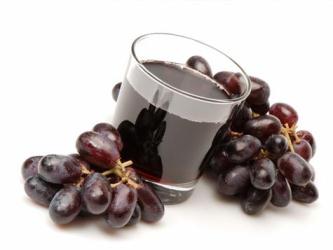
Anti-stress: wine does have a calming influence (surprise, surprise). The fact that a dinner is accompanied by a drink which helps the body relax and unwind can help the mental transition between work and relaxation. Also, people fighting other illnesses can combat them better when calm and focused.
Red wine
The Good
High content of polyphenols. The polyphenols originate from the skins, seeds, and vine stems of the grapes while some are formed during the process of vinification. In nature they exhibit a wide range of biological effects as antioxidants, antimicrobials, and modulators of 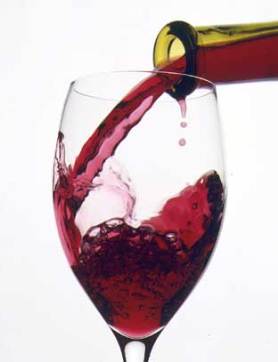
various enzyme systems. These antioxidants come in two main forms: flavonoids and nonflavonoids. Other types of alcohol, such as white wine and beer, contain small amounts of flavonoids, too, but red wine has higher levels. Resveratrol is the nonflavonoid antioxidant that researchers are most interested in.
Coronary heart disease (CHD). One of most well-documented benefits of red wine is a heart protective effect. Moderate consumption of red wine on a regular basis may be a preventative against coronary heart disease. The regular drinking of red wine has been suggested as the explanation for the "French paradox", the relatively low incidence of coronary atherosclerosis in France as compared with other Western countries, despite the generally high intake of saturated fat in the French diet. Scientists believe the red wine reduces the risk of coronary heart disease by reducing production of low density lipoprotein (LDL) cholesterol and boosting high density lipoprotein (HDL) cholesterol and by reducing blood clotting.
Cholesterol. One of the most important benefits of regular wine consumption is an increase in levels of high-density lipoprotein (HDL) cholesterol (the "good cholesterol"). One to 2 drinks per day of red wine have been shown to increase HDL cholesterol by about 11-17%. This extra HDL cholesterol can then serve to remove some of low-density lipoprotein (LDL) cholesterol (the "bad cholesterol"), from the circulation and lessen the amount of material available for fatty plaque formation. Plaque formation may be further hindered by the polyphenols in red wine that possess antioxidant properties.
Blood clots. Red wine produces anticlotting, or antithrombotic, action. Light to moderate consumers of wine have lower levels of protein fibrinogen, that promotes blood clot formation. Recent study demonstrated that in addition to alcohol, the polyphenols in red wine also promote anticlotting effect.
Atherosclerosis. Red wine may prevent the initiation and progression of atherosclerosis (hardening" or "furring" of the arteries). Atherosclerosis starts when blood vessels begin to lose their natural ability to relax, or vasodilate. Both the alcohol and polyphenols appear to favorably maintain healthy blood vessels by promoting the formation of nitric oxide (NO), the key chemical relaxing factor that plays a important role in the regulation of vascular tone.
Hypertension. Excessive alcohol consumption is generally considered a risk factor for hypertension. However, there is some evidence of red wine favorable effects on blood pressure. Two glasses of red wine (250 ml), taken together with the meal, lower post-meal blood pressure in hypertensive persons. French researchers suggest that a moderate regular wine drinking may reduce the hypertension-related risk of death.
Risk of death from all causes. European researches suggest that moderate red wine intake has a protective effect on all-cause mortality. According to studies from the UK, Finland, France and Denmark moderate consumption of wine is more beneficial than that of beer or spirits. In general, moderate daily intake of red wine (22-32 g of alcohol) is associated with a lower risk of death from all causes by 30% compared with abstainers. Sounds quite impressive!
Stroke. Red wine consumption may have a protective effect on the risk of ischemic stroke.
Kidney stones. Red wine intake reduces the risk of kidney stone formation.
Alzheimer's disease. Moderate wine drinking correlates with a lower risk for Alzheimer's disease. Resveratrol, a red wine polyphenol, was found to produce neuroprotective effects.
Smoking. Acute smoking significantly impairs vasodilatation. Red wine, with or without alcohol, decreases harmful effect of smoking on endothelium (layer of cells that provide a friction-reducing lining in lymph vessels, blood vessels, and the heart).
The Bad
Migraine. Red wine may trigger migraine headaches in some sufferers.
Dehydration. Alcohol is a dehydrating agent.
Impairment of driving-related skills. Even low amounts of alcohol can adversely effects attention and motor skills. In fact, many serious accidents are alcohol related.
Interactions with medications. Alcohol may interact harmfully with a great number medications: anticoagulants, medication for diabetes, beta blockers, antihistamines, antibiotics, antidepressants, pain relievers, sleeping pills.
Intoxication. Alcohol is a downer that reduces activity of the central nervous system. High amounts of alcohol can turn into intoxication and hangover. The alcohol intoxication causes loose muscle tone, loss of motor coordination, slower reaction times, lowering of caution and other negative effects.
Pregnancy. Drinking alcohol during pregnancy can cause a number of birth defects, ranging from mild to severe. Alcohol is quickly transferred from the mother's bloodstream to the baby's. Researchers have not been able to determine the exact amount of alcohol that is "safe" for the development of the baby. (The truth is we don't really know what a safe level of alcohol consumption is for a pregnant woman).
Liver. Over time, large amounts of alcohol can contribute to the build-up of toxins and other harmful materials in the liver, permanently damaging its function known as liver cirrhosis.
Alcoholism. Heavy drinking can develop into an addiction. Excessive alcohol use can lead to a great number of serious diseases.
Storage
Wine cellars, or wine rooms if they are above-ground, are places designed specifically for the storage and aging of wine. In an active wine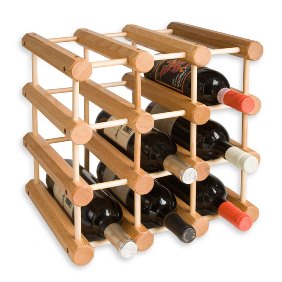 cellar, temperature and humidity are maintained by a climate control system. Passive wine cellars are not climate-controlled, and so must be carefully located. Wine is a natural, perishable food product; when exposed to heat, light, vibration or fluctuations in temperature and humidity, all types of wine, including red, white, sparkling, and fortified, can spoil. When properly stored, wines can maintain their quality and in some cases improve in aroma, flavor, and complexity as they age. Some wine experts contend that the optimal temperature for aging wine is 55 °F (13 °C), others 59 °F (15 °C). Wine refrigerators offer an alternative to wine cellars. They are available in capacities ranging from small 16-bottle units to furniture pieces that can contain 400 bottles. Wine refrigerators are not ideal for aging, but rather serve to chill wine to the perfect temperature for drinking. These refrigerators keep the humidity low, usually under 50%, which is below the optimal humidity of 50% to 70%. Lower humidity levels can dry corks out over time, allowing oxygen to enter the bottle and reduce the wine's quality.
cellar, temperature and humidity are maintained by a climate control system. Passive wine cellars are not climate-controlled, and so must be carefully located. Wine is a natural, perishable food product; when exposed to heat, light, vibration or fluctuations in temperature and humidity, all types of wine, including red, white, sparkling, and fortified, can spoil. When properly stored, wines can maintain their quality and in some cases improve in aroma, flavor, and complexity as they age. Some wine experts contend that the optimal temperature for aging wine is 55 °F (13 °C), others 59 °F (15 °C). Wine refrigerators offer an alternative to wine cellars. They are available in capacities ranging from small 16-bottle units to furniture pieces that can contain 400 bottles. Wine refrigerators are not ideal for aging, but rather serve to chill wine to the perfect temperature for drinking. These refrigerators keep the humidity low, usually under 50%, which is below the optimal humidity of 50% to 70%. Lower humidity levels can dry corks out over time, allowing oxygen to enter the bottle and reduce the wine's quality.
![]()
Disclaimer: This website is for information purposes only. By providing the information contained herein we are not diagnosing, treating, curing, mitigating, or preventing any type of disease or medical condition. Before beginning any type of natural, integrative or conventional treatment regime, it is advisible to seek the advice of a licensed healthcare professional.



























